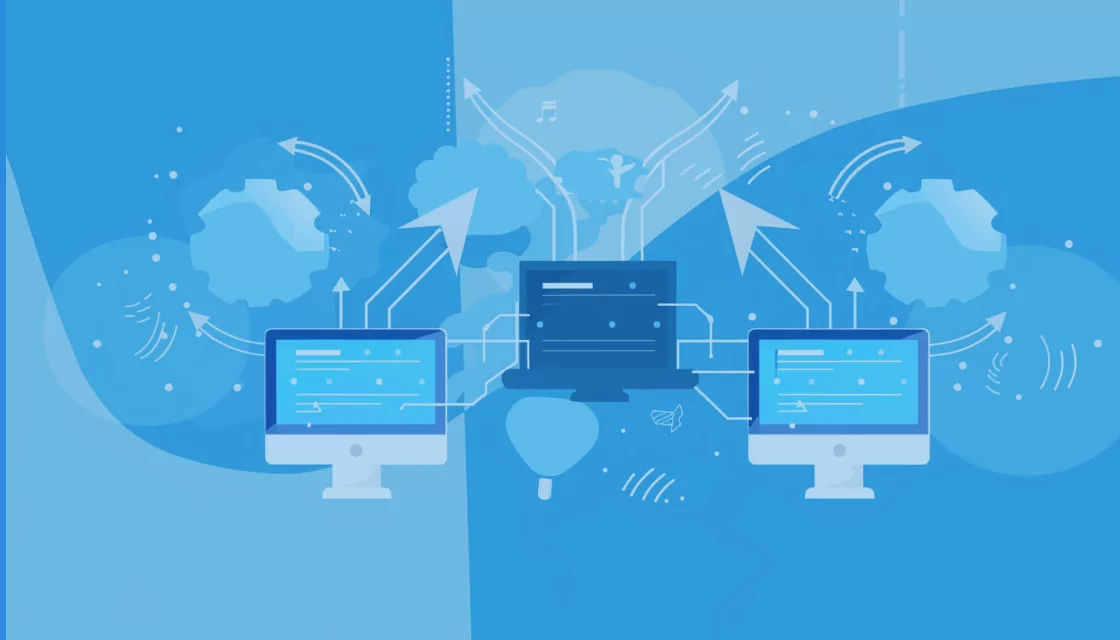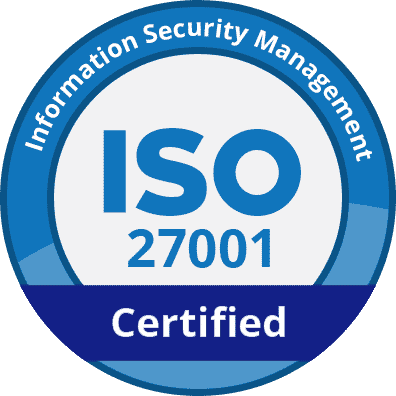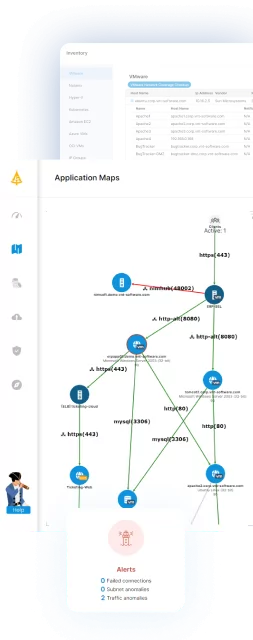What Is Business Continuity?
Business continuity refers to the processes an organization implements to ensure that essential functions can continue during and after a disaster. Business continuity planning seeks to prevent interruption of mission-critical services and to reestablish full functioning as quickly and smoothly as possible. The goal is to continue operating with minimal downtime and service degradation.
Business continuity includes various actions, from establishing fallback systems to training employees. It involves internal and external communications strategies to keep all stakeholders informed during the crisis. Effective continuity plans ensure that an organization can maintain operational capabilities in the face of adverse conditions, protecting profitability and reputation.
Table of Contents
Toggle- What Is Business Continuity?
- What Is Disaster Recovery?
- Why Business Continuity and Disaster Recovery Matter
- The Similarities Between Business Continuity and Disaster Recovery
- Tips from the Expert
- Business Continuity vs Disaster Recovery: The Key Differences
- How BC and DR Work Together
- Faddom: Supporting Disaster Recovery with Application Dependency Mapping
What Is Disaster Recovery?
Disaster recovery (DR) is a subset of business continuity focused on the technology systems that support business functions. In the event of a technical disruption such as a system failure, cyberattack, or natural disaster, disaster recovery procedures are activated to recover and restore data and IT infrastructure. The aim is to minimize downtime and data loss, ensuring critical IT resources are available as quickly as possible.
Disaster recovery planning involves setting up a secure, remote backup of data and applications. Companies often use cloud storage solutions due to their scalability and flexibility. Regular testing of the disaster recovery plan is crucial to ensure its effectiveness. Organizations must update their DR strategies regularly to adapt to new technological risks and ensure alignment with broader business continuity plans.
Why Business Continuity and Disaster Recovery Matter
Business continuity and disaster recovery help organizations prepare for, respond to, and recover from disruptive events. These plans ensure that a company can continue operating and meet its legal, regulatory, and ethical obligations under adverse conditions. Without such plans, organizations might face financial losses, reputational damage, and operational setbacks.
The impact of local incidents can ripple through global networks, magnifying the potential damage. Organizations that neglect continuity and recovery planning risk longer recovery times, higher costs, and lost business opportunities. Implementing business continuity and disaster recovery plans promotes confidence among customers, employees, and stakeholders.
The Similarities Between Business Continuity and Disaster Recovery
First, both BC and DR aim to minimize disruptions and enable a swift return to normal operations after an adverse event. Each involves preparing for potential crises and implementing measures to protect critical business functions.
Both BC and DR require detailed planning and regular testing to ensure effectiveness. These plans must be updated periodically to reflect changes in the business environment, technology, and potential threats. Collaboration between departments is essential for both, as they involve coordination between IT, operations, and leadership to ensure seamless execution during a crisis.
Additionally, BC and DR emphasize resilience. While BC focuses on the organization as a whole and DR centers on IT systems, both approaches share the same ultimate goal: ensuring that essential services remain available or can be quickly restored in the face of disruption.

Lanir specializes in founding new tech companies for Enterprise Software: Assemble and nurture a great team, Early stage funding to growth late stage, One design partner to hundreds of enterprise customers, MVP to Enterprise grade product, Low level kernel engineering to AI/ML and BigData, One advisory board to a long list of shareholders and board members of the worlds largest VCs
Tips from the Expert
In my experience, here are tips that can help you better implement and optimize your business continuity strategy:
-
Leverage predictive analytics for risk identification
Use predictive analytics to identify potential threats based on historical data and industry trends. This proactive approach can help fine-tune your continuity and disaster recovery plans.
-
Automate failover testing
Regularly test failover systems using automation to reduce manual intervention and ensure consistent reliability. Automated testing also helps validate Recovery Time Objectives (RTO) and Recovery Point Objectives (RPO).
-
Incorporate supply chain resilience
Beyond internal operations, evaluate your supply chain for vulnerabilities. Diversify vendors or establish backup suppliers to ensure materials or services critical to operations are not disrupted.
-
Implement role-based incident simulations
Conduct simulations tailored to different roles within your organization. This ensures employees understand their specific responsibilities during a crisis, boosting readiness and confidence..
-
Adopt continuous improvement practices
Treat your business continuity plan as a living document. Integrate feedback from every test and actual incidents to continually refine your strategies and address emerging risks.
Business Continuity vs Disaster Recovery: The Key Differences
Let’s see how these two concepts compare in several key areas.
1. Purpose
Business continuity aims to keep the company operational during crises, covering all aspects of the organization. The goal is to minimize the operational impact and ensure continuity of service delivery, ultimately protecting the organization’s viability. This strategic approach considers both short-term and long-term responses to a range of potential disruptions.
Disaster recovery focuses on rapidly restoring IT systems and data access after a disruption. This tactical component of continuity planning is vital because many modern business operations depend heavily on information technology. The goal is to recover critical systems to ensure business functions can resume within acceptable downtime limits.
2. Scope of Actions
Business continuity involves a comprehensive approach, addressing the readiness of all business units, employees, and business processes. It includes logistics, supply chain factors, personnel, and workspace contingencies. Continuity plans are extensive, covering everything from alternative work locations to maintaining communications and operational capabilities.
Disaster recovery is focused on the IT sector and technological assets of a company. It includes actions related to data backup, system recovery, and hardware redundancy. The scope is narrower, emphasizing the restoration of technical operations essential for business function.
3. Planning and Implementation
Business continuity planning involves input from all levels of the organization. It requires coordination across departments to identify potential threats and develop strategies to mitigate these risks. Continuity plans are tested and updated regularly to reflect changes in the business environment and operational demands.
Disaster recovery planning requires a detailed understanding of IT infrastructure and data necessities. Implementing DR solutions involves configuring backup sites, installing failover mechanisms, and ensuring data integrity. Regular drills and updates ensure that recovery strategies remain effective and incorporate technological advancements.
4. Timeframe
Business continuity planning addresses the immediate aftermath of a crisis as well as sustaining operations long-term. Plans include immediate response strategies and more gradual recovery processes that may span weeks, months, or even longer, depending on the severity of the disruption.
Disaster recovery plans typically operate on a shorter timeline, emphasizing a swift return to normalcy. Objectives such as Recovery Time Objectives (RTO) and Recovery Point Objectives (RPO) define the maximum acceptable downtime and data loss, respectively.
5. Key Activities
Business continuity includes conducting business impact analyses, identifying critical functions, and developing strategies to maintain or rapidly restore those functions. Training and communication are also important, ensuring that all employees know their responsibilities during an interruption.
Disaster recovery activities revolve around technology asset management, including data backups, network setups, and server redundancies. Technical teams focus on ensuring these systems can be recovered quickly, adhering to the defined RTO and RPO.
How BC and DR Work Together
Business continuity (BC) and disaster recovery (DR) are complementary components of an organization’s overall resilience strategy. While BC focuses on maintaining all essential business functions during a crisis, DR zeroes in on restoring IT systems and data. Together, they ensure that an organization can both survive disruptions and recover swiftly afterward.
BC relies on DR to handle the technological aspects that enable critical operations. For instance, during a crisis, a company’s business continuity plan might involve shifting to remote work or rerouting supply chains, but without functional IT systems—made possible by disaster recovery measures—these actions would be ineffective. DR, in turn, operates within the broader BC framework, as restoring data and systems is just one part of resuming normal operations.
Both BC and DR require alignment to ensure seamless recovery. This includes coordinating testing, sharing information on risk assessments, and ensuring that recovery objectives (like RTO and RPO) support business continuity goals. Organizations that integrate BC and DR planning can respond faster to disruptions, reduce losses, and ensure smoother recovery transitions.
Faddom: Supporting Disaster Recovery with Application Dependency Mapping
Faddom strengthens Business Continuity (BC) and Disaster Recovery (DR) with its agentless, real-time application dependency mapping. By providing a comprehensive view of IT assets and their interdependencies, it enables IT teams to prioritize critical systems for swift recovery, minimizing downtime and data loss. Its mapping capabilities are particularly valuable for companies looking to ensure a single source of truth for server and business application dependencies, aiding in both DR planning and execution.
Additionally, Faddom also aligns BC and DR plans by offering visibility into hybrid infrastructures, cloud environments, and on-premises setups. This helps teams detect unexpected connections, optimize recovery strategies, and adapt to new risks, ensuring seamless operations and efficient recovery during disruptions.
See it in action! Start your free trial today by simply filling out the form in the sidebar!








